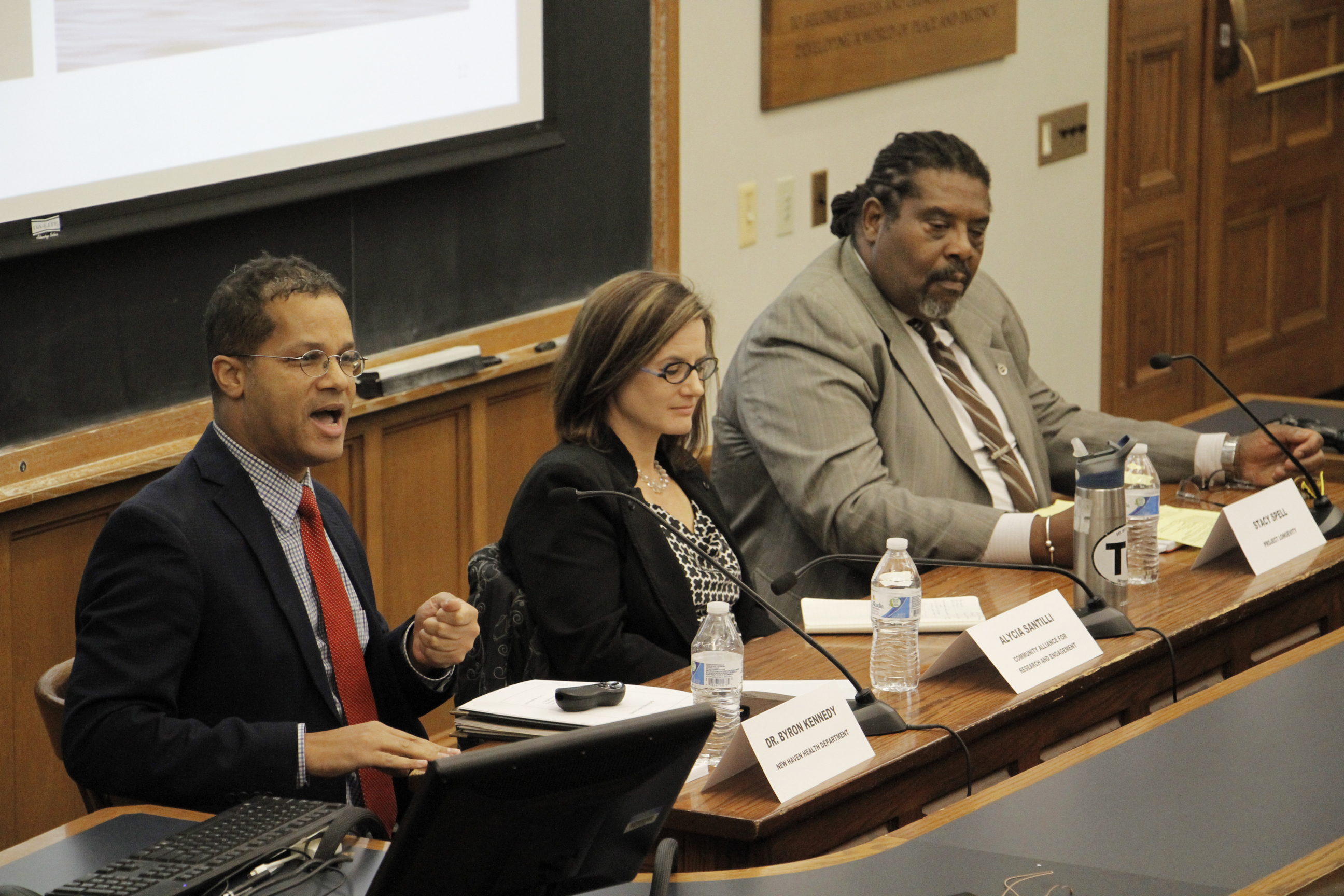
On Thursday night, nearly 70 members of the Yale and New Haven communities crowded into a room at the Yale Law School to discuss the city’s most pressing health issues.
The event was the last installment of this semester’s three-part Yale and New Haven Discussion Series. The event’s panel featured Byron Kennedy SPH ‘01 MED ‘04 GRD ‘04, the director of New Haven’s Department of Health, Alycia Santilli, the Southern Connecticut State University’s liaison for the Community Alliance for Research and Engagement, and Stacy Spell, director of Project Longevity — an initiative to reduce violence in Connecticut’s major cities .
The discussion centered on the power of collaboration and community involvement in affecting social change. Attendees said they found the event particularly relevant in light of President-elect Donald Trump’s recent election and its implications on social causes.
“We need to be reminded that we have the power to raise our voices, to make phone calls, to get involved in any way we possibly can in this national fight,” Santilli said, “because there’s going to be a huge national fight in the next four years.”
Kennedy and Santilli began the event with presentations outlining public health disparities afflicting Connecticut and New Haven, touching on topics ranging from asthma to infant mortality.
Eschewing a data-driven approach, Spell used his personal experience growing up and working in a low-income area to inform his perspective on how to address social issues.
“When you see a gap, you should step into it,” he said. “Be present.”
Spell described himself as a community organizer, arguing that community cohesion is key to addressing many public health issues and alleviating income inequality. He cited the empowerment that accompanies being part of “a winning agenda” as key to uniting communities around common goals.
Spell asserted, however, that New Haven’s many communities should not be isolated from Yale. He called on Yale students to set aside their fears and step into lesser known Elm City neighborhoods and walk down streets often perceived as dangerous, including Whalley Avenue.
Nadine Herring, a New Haven resident and a panelist at a Nov. 5 installment of the series, added that Yale students often seek to improve communities on a grand and global scale. But, she said, it is more effective for students to foster genuine connections with residents of New Haven.
“We don’t need you to save us,” Herring said. “We need you to work together with us. We’re not guinea pigs, we’re not science projects. We’re people, and we’re proud people.”
Yale students who attended the event expressed interest in becoming more involved with Elm City life. Fran Xavier ARC ’18 said the school should take on a more active role in community engagement, arguing that architecture is integral to creating an environment and should engage with residents of that environment.
Attendee Karly Greene shared some specific actions she took to break down the barriers between her and the city, including joining Elm City community Facebook groups to learn of upcoming events and unsubscribing from Yale Police Chief Ronnell Higgins’ safety alerts, which she said contribute to a “culture of fear.”
Anderson Tuggle LAW ’18, who helped organize the event, said he plans to continue the series next semester. He hopes to organize panels that will address issues of housing, unions and policing in the city, he added.
The Nov. 5 panel centered on uniting New Haven and Yale’s transportation systems.







